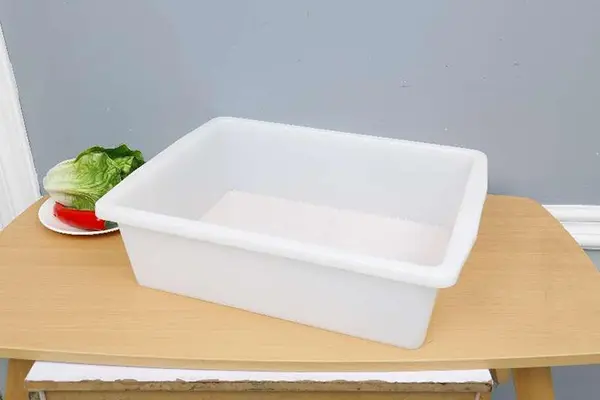It shows that the plastic product is non-toxic, odorless, low density, excellent in strength, stiffness, hardness and heat resistance, and can be used at around 100 degrees. It has good electrical properties and high-frequency insulation and is not affected by humidity, but it becomes brittle at low temperatures, is not wear-resistant, and is easy to age. It is suitable for making general mechanical parts, corrosion-resistant parts and insulating parts. Common acid and alkali organic solvents have almost no effect on it and can be used in tableware.

Nationally prescribed plastic product labels (sometimes marked with numbers 1, 2, 3, 4, 5, 6, 7, etc.)
Polyester———— 01—PET (Pet bottle) Such as: mineral water bottle, carbonated drink bottle
Recommendation: Do not recycle beverage bottles to hold hot water.
Usage: Heat-resistant to 70°C, only suitable for warm or frozen drinks. It is easy to deform when filled with high-temperature liquids or heated, and substances harmful to the human body may melt out. Moreover, scientists found that after 10 months of use, Plastic No. 1 may release the carcinogen DEHP, which is toxic to the testicles. Therefore, throw away beverage bottles after use, and do not use them as water cups or storage containers to hold other items, so as not to cause health problems.
High-density polyethylene – 02-HDPE such as: cleaning supplies, bath products
Recommendation: If cleaning is not thorough, it is not recommended to reuse. Usage: It can be reused after careful cleaning, but these containers are usually difficult to clean, leaving original cleaning supplies and becoming a breeding ground for bacteria. It is best not to reuse them.
Polyvinyl chloride———— 03-PVC Such as: some decorative materials
Usage: This kind of material is prone to produce harmful substances when it is high temperature, and it will even be released during the manufacturing process. When toxic substances enter the human body with food, they may cause breast cancer, birth defects in newborns and other diseases. At present, containers made of this material are rarely used for packaging food. If in use, never let it get heated.
Low density polyethylene – 04-LDPE such as: cling film, plastic film, etc.
Recommendation: Do not wrap plastic wrap on the surface of food for use in a microwave oven: it does not have strong heat resistance. Usually, qualified PE plastic wrap will melt when the temperature exceeds 110°C, leaving behind some plastic preparations that cannot be decomposed by the human body. . Moreover, when food is wrapped in plastic wrap and heated, the fat in the food can easily dissolve harmful substances in the plastic wrap. Therefore, before food is put into the microwave oven, the plastic wrap must be removed first.
Polypropylene———— 05-PP (can withstand temperatures above 100 degrees) such as: microwave lunch box
recommendation: Remove the lid when placing it in the microwave. Usage: The only plastic box that can be placed in the microwave and can be reused after careful cleaning. Special attention should be paid to the fact that the body of some microwave lunch boxes is indeed made of No. 5 PP, but the lid is made of No. 1 PE. Since PE cannot withstand high temperatures, it cannot be put into the microwave oven together with the box body. For safety reasons, remove the lid from the container before placing it in the microwave.
Suggestion: Do not use a microwave oven to cook instant noodles. Usage: It is heat-resistant and cold-resistant, but it cannot be placed in a microwave oven to avoid the release of chemicals due to excessive temperature. And it cannot be used to pack strong acid (such as orange juice) or strong alkaline substances, because it will decompose polystyrene that is not good for the human body and can easily cause cancer. Therefore, you want to avoid packing hot food in snack boxes.
Other plastic codes – 07-Others such as: kettles, cups, baby bottles
Suggestion: PC glue releases bisphenol A when heated. Use: A material that is widely used, especially in baby bottles. It is controversial because it contains bisphenol A. Lin Hanhua, associate professor of the Department of Biology and Chemistry at City University of Hong Kong, said that theoretically, as long as bisphenol A is 100% converted into a plastic structure during the production of PC, it means that the product does not contain bisphenol A at all, let alone releases it. However, if a small amount of bisphenol A is not converted into the plastic structure of PC, it may be released and enter food or drinks. So, caution is the rule and take extra care when using this plastic container.
Post time: 03-16-2024



